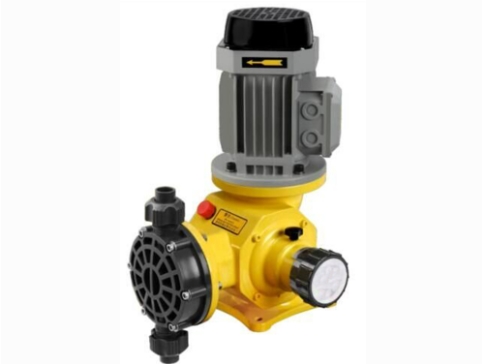Nitric Acid Solution Hydraulic Diaphragm Pump
Hydraulic Diaphragm Pump (Nitric Acid Solution Delivery) Selection Analysis and Optimization Recommendations
I. Basic Parameter Compatibility Verification
Flow and Pressure
Required Flow: 300 L/h
Rated Pump Flow: 300 L/h (Perfect Match)
Required Outlet Pressure: 1.7 MPa
Rated Pump Pressure: 1.7 MPa (Safety margin recommended to be increased to at least 2.0 MPa to avoid seal fatigue caused by long-term full-load operation)
Material Corrosion Resistance
Nitric Acid Concentration: 74% (Strongly Oxidizing Acid)
Pump Wetfield Material: 316L (Recommended for better nitric acid corrosion resistance than 304L)
Seal Material: Verify whether it is PTFE or FEP (fluoroplastic) to avoid nitric acid corrosion on rubber materials (such as EPDM).
Ports and Safety Valve
Port Size: Inlet DN20 / Outlet DN15 (Verify flange standards and compatibility with on-site piping)
Safety Valve Opening Pressure: 2.3 MPa (1.7 MPa higher than the pump's rated pressure, in compliance with safety regulations)
II. Motor and VFD Optimization
Motor Power and Speed
Configured Motor: 1.1 kW - Level 4 Standard VFD Motor (380V)
Flow Adjustment Range: VFD motors can achieve 0-100% flow adjustment, but the pump's minimum stable flow rate must be verified (usually no less than 20% of the rated flow rate).
Energy Saving Tip: If the process allows, reduce the motor speed (e.g., from 50 Hz to 40 Hz) using VFD to reduce energy consumption and extend pump life.
VFD Control Accuracy
Required Accuracy: >1% (the pump's accuracy must be within ±0.5%, and the VFD requires a high-precision sensor).
Recommended Configuration: Add a flowmeter feedback signal (e.g., 4-20 mA) to the VFD to create a closed-loop control loop and improve accuracy.
III. Key Risks and Improvement Solutions
Nitric Acid Corrosion Risk
Risk: 74% nitric acid is highly corrosive to metals. Long-term operation may cause pitting corrosion in 316L material.
Improvement Solution:
Insert a PTFE or PFA coating inside the pump head to enhance corrosion resistance.
Regularly inspect the pump body material thickness (ultrasonic thickness measurement is recommended every six months).
Diaphragm Life and Rupture Warning
Risk: Nitric acid may accelerate diaphragm aging, leading to leakage.
Improvement Solution:
Use a double-diaphragm structure with a built-in diaphragm rupture sensor (such as a pressure switch or liquid level sensor).
PTFE composite membrane is recommended for the diaphragm material (nitric acid-resistant and flexible).
Redundant Safety Valve Design
Risk: The safety valve opening pressure (2.3 MPa) is close to 135% of the pump's rated pressure (1.7 MPa), potentially leading to false tripping due to pressure fluctuations.
Improvement Solution: Add a secondary safety valve with an opening pressure set to 2.0 MPa (118% of the rated pressure) to provide dual protection.

IV. Recommended Model Optimization Solution
Parameters: Original Model (YDJCM-300/1.7) Optimized Model Recommendation
Rated Pressure: 1.7 MPa 2.0 MPa (Increased Safety Margin)
Wetted Material: 316L 316L + PTFE Liner (Enhanced Corrosion Resistance)
Diaphragm Structure: Single Diaphragm Dual Diaphragm + Rupture Sensor
Safety Valve Configuration: Single Valve (2.3 MPa) Main Valve (2.3 MPa) + Auxiliary Valve (2.0 MPa)
Motor Power: 1.1 kW 1.5 kW (Power reserve to prevent overload)
Control Method: Open-Loop Variable Frequency Drive Closed-Loop Variable Frequency Drive (with flow feedback)
V. Operation and Maintenance Recommendations
Daily Inspection:
Monitor the pump body temperature (normally below 60°C).
Check the hydraulic oil level (a diaphragm rupture may cause emulsification of the hydraulic oil).
Regular Maintenance:
Replace the hydraulic oil every three months (ISO VG32 anti-wear hydraulic oil is recommended). Check diaphragm integrity every six months (via hydraulic oil acid analysis or visual inspection).
Emergency Plan:
Equip a nitric acid leak neutralizer (such as sodium carbonate solution).
Install an anti-corrosion weir around the pump to prevent nitric acid leaks and spread.
Email: sales01@cxflowmeter.com
WhatsApp: 008618049841995

